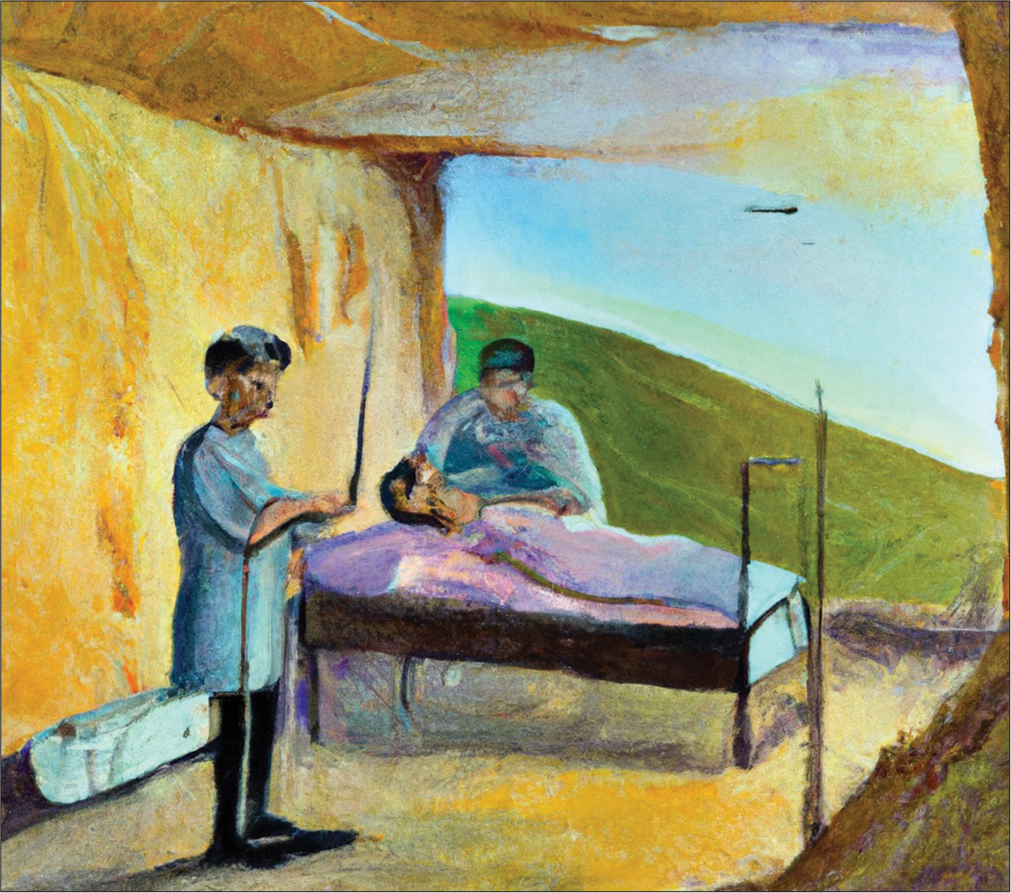Translate this page into:
Roadmap for Transforming Indian Healthcare: A Thought Beyond Number of Doctors
*Corresponding author: Himel Mondal, Department of Physiology, All India Institute of Medical Sciences, Deoghar, Jharkhand, India. himelmkcg@gmail.com
-
Received: ,
Accepted: ,
How to cite this article: Mondal H. Roadmap for Transforming Indian Healthcare: A Thought Beyond Number of Doctors. J Compr Health. 2024;12:120-1. doi: 10.25259/JCH_9_2024
Dear Editor,
I read an article titled “How Many doctors do we need?” in a recent edition of the journal.1 The issue discussed in the editorial is an important topic to be considered by stakeholders for better health-care delivery in India. In this context, I would like to share some of my opinions.
The effectiveness of healthcare in developing countries is influenced by various factors beyond the sheer number of doctors. In the context of India, several factors contribute to the complexity of improving healthcare outcomes beyond simply increasing the number of doctors. Here are specific considerations for India:
Population density and diversity: India’s vast and diverse population, coupled with variations in healthcare needs across different regions, poses a challenge. There is a significant gap in healthcare infrastructure and services between urban and rural areas in India.2 Increasing the number of doctors needs to be accompanied by efforts to bridge this gap and ensure equitable distribution of healthcare resources.
Unemployment of doctors: India is heading toward a situation where there is a high chance that doctors would roam unemployed due to the higher number of passing graduates every year and very few employments in government sectors. “Doctors don’t want to go to rural areas” is a history now and is evident when the recruitment of general duty medical officers is conducted.3 Hence, stakeholders should reorganize employment strategies to engage young doctors.
Infrastructure challenges: Many parts of India face challenges in healthcare infrastructure, including shortages of hospitals, medical equipment, and basic amenities. Addressing these infrastructure gaps is crucial for doctors to provide quality care.4 Figure 1 shows such a scenario where a doctor in remote village is treating a patient without adequate infrastructure. Warrior require armor to fight!
Preventive healthcare emphasis: A robust focus on preventive healthcare is essential in India due to the prevalence of communicable and non-communicable diseases. Beyond treating illnesses, efforts should be directed toward health education, vaccination programs, and lifestyle interventions.5 Hence, strengthening healthcare delivery through an increase in nurses, paramedical staff, and root-level workers should be highlighted along with doctors.
Traditional and alternative medicine: India has a rich tradition of alternative medicine systems. Integrating traditional medicine into the healthcare framework, along with maintaining high standards of medical education, ensures a holistic approach to healthcare delivery. More numbers of traditional and alternative medicine centers would help balance the higher pressure in modern medicine centers.6
Disease-specific challenges: India faces unique health challenges, such as a high burden of infectious diseases, maternal and child health issues, and emerging noncommunicable diseases. Tailoring healthcare strategies to address these specific challenges is crucial. Noncommunicable diseases are a neglected part due to the higher burden of communicable diseases. However, non-communicable diseases are silent killers and impact the overall patient burden. Hence, now it is the time to emphasize non-communicable diseases too.7
Paradigm shift to family practice: A paradigm shift from specialty practice toward emphasizing family practice is crucial for transforming the Indian health system. By promoting holistic and preventive care within a family context, it ensures a more comprehensive understanding of patients’ health needs.8 This shift fosters continuity of care, addresses the diverse health challenges prevalent in India, and ultimately contributes to more effective, patient-centered healthcare delivery.

- A doctor is treating a patient in a remote village without adequate infrastructure.
- Image credit: Dall-E2 (https://openai.com/dall-e-2) with authors input instruction
In conclusion, while increasing the number of doctors is vital for India, a holistic approach that considers regional diversity, infrastructure development, preventive healthcare, economic factors, and effective policy implementation is necessary to bring about sustained improvements in the health of the population.
Ethical approval
The Institutional Review Board approval is not required.
Declaration of patient consent
Patient’s consent was not required as there are no patients in this study.
Conflicts of interest
There are no conflicts of interest.
Use of artificial intelligence (AI)-assisted technology for manuscript preparation
Author used artificial intelligence Dall-E2 (https://openai.com/dall-e-2) for creating image for Figure 1.
Financial support and sponsorship
Nil.
References
- Research on Disparities in Primary Health Care in Rural Versus Urban Areas: Select Perspectives. Int J Environ Res Public Health. 2022;19:7110.
- [CrossRef] [PubMed] [Google Scholar]
- Business Today. Available from: https://www.businesstoday.in/latest/story/mbbs-is-the-new-btech-over-500-doctors-compete-for-20-jobs-at-delhis-gtb-hospital-picture-goes-viral-383886-2023-06-01 [Last accessed on 2023 Dec 20]
- [Google Scholar]
- The Transformation of the Indian Healthcare System. Cureus. 2023;15:e39079.
- [CrossRef] [Google Scholar]
- Primary Health-Care Goal and Principles In: Healthcare Strategies and Planning for Social Inclusion and Development. Netherlands: Elsevier; 2022. p. :221-39.
- [CrossRef] [Google Scholar]
- Utilization of Alternative Systems of Medicine as Health Care Services in India: Evidence on AYUSH Care from NSS 2014. PLoS One. 2017;12:e0176916.
- [CrossRef] [PubMed] [Google Scholar]
- Monitoring of Non-Communicable Diseases in a Primary Healthcare Setting in India: A Quality Improvement Initiative. Cureus. 2023;15:e38132. Erratum in: Cureus 2023; 15:c112
- [CrossRef] [Google Scholar]
- The Curious Case of Extinction of Family Physicians from the Indian Health System-An Open Letter to the Members of the National Medical Commission: Draft Competency-Based Medical Education Curriculum Regulations 2023-Complete Exclusion of Family Physicians/Family Medicine Education from the MBBS Course Curriculum! J Family Med Prim Care. 2023;12:1477-84.
- [CrossRef] [PubMed] [Google Scholar]






